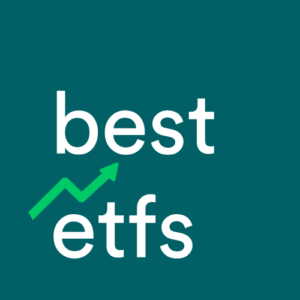In this short article, we’ll explain how simple it can be to provide a valuation of a bank share such as Commonwealth Bank of Australia (ASX:CBA). However, while it may seem ‘simple’ to create a valuation model of a company, no share valuation is gauranteed. If ‘value investing’ were as easy as what we’re about to show you, everyone would be a millionaire!
Our largest bank shares make up more than one-third of the local share market, measured by the market capitalisation of the largest 200 companies in the S&P/ASX 200 index.
If you really want to understand how to value a dividend share, like a bank or REIT, you should consider watching the tutorial video from the analyst team at Rask Australia.
You can subscribe to the Rask Australia YouTube channel and receive the latest (and free) value investing videos by clicking here.
How to use ratios
The ‘PE’ ratio compares a company’s share price (P) to its most recent full-year earnings per share (E). Remember, ‘earnings’ is just another word for profit. That means, the PE ratio is simply comparing share price to the most recent yearly profit of the company. Some experts will try to tell you that ‘the lower PE ratio is better’ because it means the share price is ‘low’ relative to the profits produced by the company. However, sometimes shares are cheap for a reason!
Secondly, some extremely successful companies have gone for many years (a decade or more) and never reported an accounting profit — so the PE ratio wouldn’t have worked.
Therefore, we think it’s very important to dig deeper than just looking at the PE ratio and thinking to yourself ‘if it’s below 10x, I’ll buy it.’
One of the simple ratio models analysts use to value a bank share is to compare the PE ratio of the bank/share you’re looking at with its peer group or competitors and try to determine if the share is over-valued or under-valued relative to the average. From there, and using the principle of mean reversion, we can multiply the profits/earnings per share by the sector average (E x sector PE) to reflect what an average company would be worth. It’s like saying, ‘if all of the other stocks are priced at ‘X’, this one should be too’.
Using CBA’s share price today, together with the earnings per share data from its 2020 financial year, we can calculate the company’s PE ratio to be 23.4x. That compares to the banking sector average PE of 24x.
Reversing the logic here, we can take the profits per share (EPS) ($3.68) and multiply it by the ‘mean average’ valuation for CBA. This results in a ‘sector-adjusted’ share valuation of $89.07.
Valuing dividends (a simple guide)
Since bank shares like CBA have a history of paying dividends — and they are relatively stable businesses like REITs or ETFs — we can use a modelling tool called a dividend discount model or DDM to do a valuation.
A DDM uses the dividends shareholders are ‘expected’ to receive to arrive at a valuation.
For simplicity, let’s assume last year’s dividend payments are consistent. Important warning: last year’s dividends are not always a good input to a DDM because dividends are not guaranteed since things can change quickly inside a business. So far in 2020, Australia’s Big Banks have been cutting or deferring their dividends.
To make this easy to understand, using our DDM we will assume the dividend payment grows at a consistent rate in perpetuity (i.e. forever) at a yearly rate between 2% and 3%.
Next, we have to pick a yearly ‘risk’ rate to discount the dividend payments back into today’s dollars. The higher the ‘risk’ rate, the lower the share price valuation.
We’ve used an average rate for dividend growth and a risk rate between 6% and 11%.
This simple DDM valuation of CBA shares is $47.28. However, using an ‘adjusted’ dividend payment of $3.37 per share, the valuation goes to $60.41. The valuation compares to Commonwealth Bank of Australia’s share price of $86.21.
What now?
These two models could be used a guide to the valuation process and analysing a bank share like Commonwealth Bank of Australia. If we were looking at the shares and considering an investment, we would first want to know more about the bank’s growth strategy. For example, are they pursuing more lending (i.e. interest income) or more non-interest income (fees from financial advice, investment management, etc..
Next, take a close look at economic indicators like unemployment, house prices and consumer sentiment. Where are they headed? Finally, it’s always important to make an assessment of the management team. For example, when we pulled data on CBA’s culture we found that it wasn’t a perfect 5/5. Culture is one thing to think carefully about.



